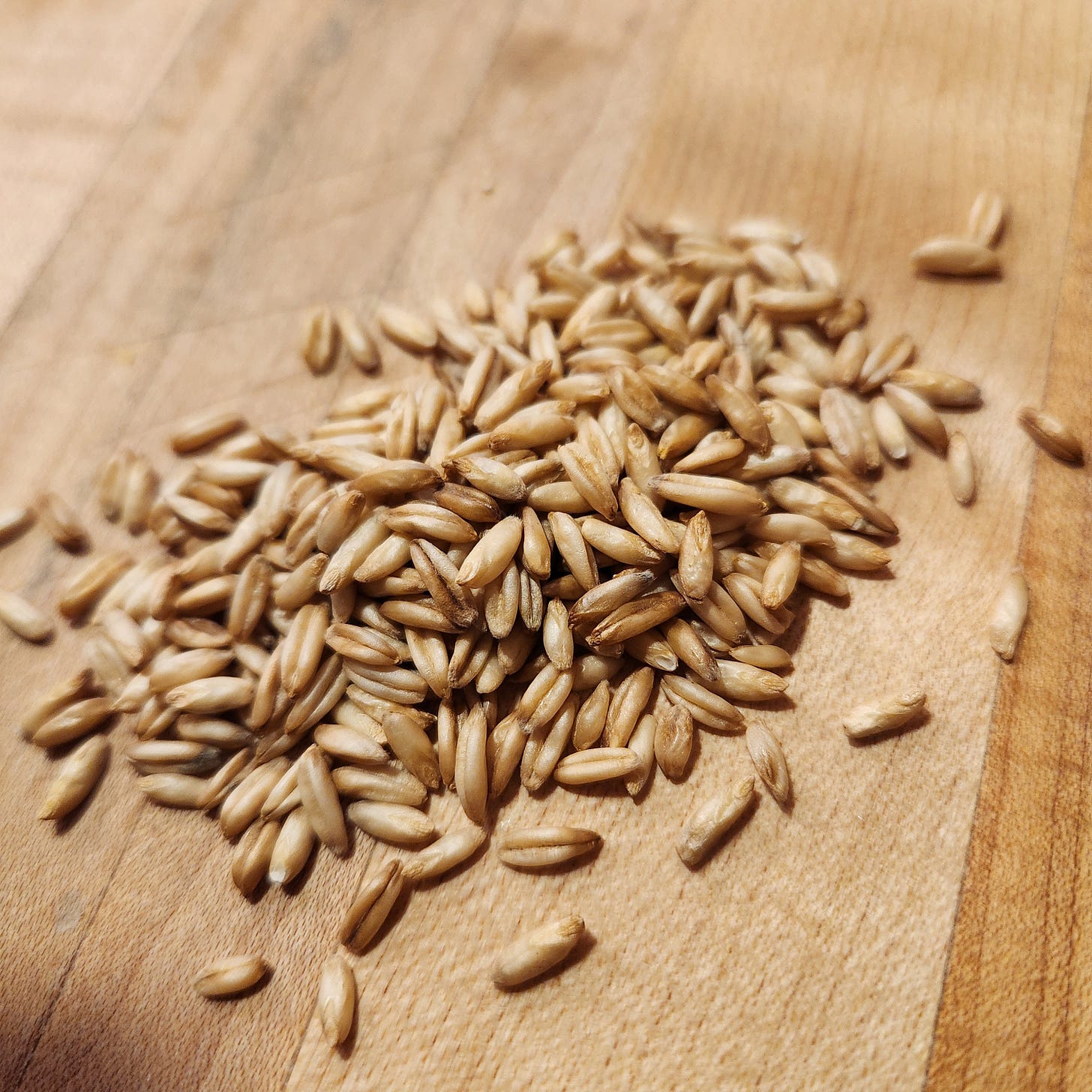What are Oats?
Oats are a type of cereal grain and a member of the grass family. There are two types of oats, hulled and naked. This blog post will focus on hulled oats, the type those of us in the Western Hemisphere are familiar with.
Hulled oats were initially gathered by our paleolithic ancestors possibly as far back as fifty thousand years ago. They were later domesticated and cultivated, likely in Europe around the year 1,000 BCE. There are several varieties of oats, but only one main type, the Avena sativa, or common oat, is primarily used for human consumption. Other types of oats are cultivated to feed livestock as oats are a nutritious and energy-rich animal feed.
Oats and the Americas
European settlers brought oats to the Americas as early as the 17th century. Even then, the focus of many oat crops was to produce food for animals, especially for horses which were needed for their physical labor. As machines gradually replaced animal labor during the Industrial Revolution, demand for feed oats decreased. Even so, oats are still grown more for animal feed than for human consumption.
Our ancestors ate various oat preparations, mostly porridges, throughout the millennia. In the Americas, oats became a diet staple when oatmeal became a popular breakfast food, around the turn of the 20th century. This coincided with the development of boxed cereals and the sale of them in early grocery stores. In recent years, demand for oat milk and other new products that use oats has led to an increase in oat production and consumption.
Canada is the largest producer of oats in the Americas, and they produced 3.4 million tons of oats in 2024. The United States is the world’s largest oat importer, and they import over eighty percent of Canada’s oat exports annually. Oats are also grown in Mexico, but only in very small quantities. Mexico is the world’s seventh largest importer of oats, and like the United States, they get most of their oats from Canada.
The Environmental Benefits of Growing Oats
Oats like cool, wet summers, but they don’t tolerate cold winters well. This limits the climates they can grow well in, but in other ways oats are very easy crops. They don’t need a particularly nutrient-rich soil, and they aren’t prone to many diseases except for rust. Because oats grow so quickly and densely, weed control is easy for farmers, reducing the need for herbicides. Oats also make a great groundcover which can be plowed in to fertilize the soil.
Oats are planted at different times of the year depending on their intended use and the region’s climate. Like many cereals, oats are annuals, meaning they only survive one growing season. They are harvested by a combine which gathers both the oat heads and straw. Oat straw is an excellent animal bedding, meaning farmers who grow oats get a second use out of their crop.
Why Oats are a Great Thing to Eat
Oats contain protein, fiber, and B vitamins. Eating oats helps lower blood lipids and cholesterol. Oats also contain antioxidants which have numerous health benefits, including reducing inflammation. Eating oats, especially those that were locally grown, helps financially support farmers who incorporate oat crops into their crop rotation plans.
Baking With Oats
One of the most common forms of oats available is rolled oats which, as the name suggests, are made by rolling oats out to make them flat. The larger surface area means the oats cook more quickly, and the softer texture means they can be added directly to cookie doughs and streusels, making them easy to bake with as well. Rolled oats are usually steamed to denature a naturally occurring enzyme which can cause rancidity.
Whole oats can be cooked until soft; it just takes longer. Some whole oats are cut rather than rolled, resulting in steel-cut oats. Some people prefer steel-cut oats for porridges as they retain more of a bite after cooking. However, they take longer to cook and, as far as processed oats go, they just aren’t as versatile as rolled oats.
If you purchase whole oats and want to use them in bread baking, you can mill them on the loosest setting of your tabletop stone mill to create what looks like a mixture of steel-cut oats, rolled oats, and oat flour. This mixture can be combined with an equal portion of water to make a soaker for your bread. However, we don’t recommend this approach for pastry applications since some of the larger oat pieces will be too hard to use in place of rolled oats. Using a stone mill, really the only reliable oat product suitable for pastry purposes you can make is a fine oat flour.
If you want to make your own rolled oats, you can buy a separate machine called a “flaker” which can roll out oats, or any other grain for that matter. It’s not exactly an inexpensive machine, but if you eat oatmeal daily, or if you just really love flaked grains, it may be worth the investment.
This week’s recipe is for Strawberry Rhubarb Crisp. Made with rolled oats, the texture and flavor of the crisp topping pairs perfectly with the sweet, jammy baked fruit. Endlessly versatile and adaptable, this simple crisp recipe can be made with any juicy spring or summer fruit. But, strawberries and rhubarb are always a winning combination. Not too sweet, this Strawberry Rhubarb Crisp even makes great leftovers for the next morning, bringing oats full-circle and back to the breakfast table. Let’s get baking!





